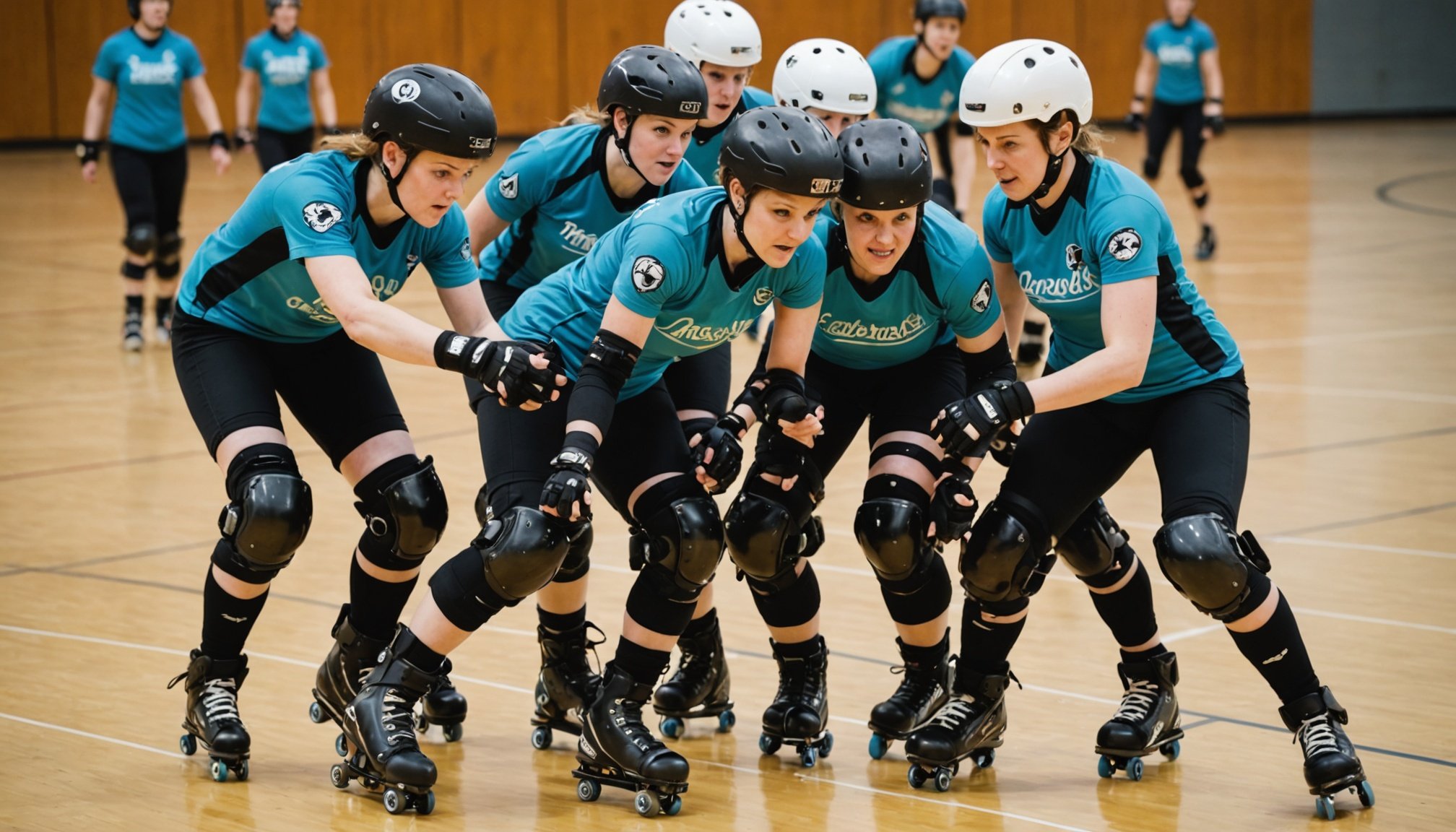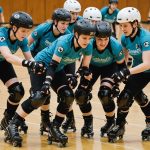Innovative Team-Building Exercises
Enhancing team dynamics in roller derby requires specialized team-building techniques. These exercises are crafted to promote collaboration and sharpen communication skills essential for the track. One notable activity is Roller Derby Tag, where skaters must work together to protect one another, while fostering quick decision-making and trust.
Incorporating various cohesion exercises can significantly benefit team unity. A popular activity includes relaying courses, which require coordinated strategies and split-second decisions. Such exercises are designed to encourage dialogue and mutual understanding, emphasizing the importance of each team member’s input.
Also read : Score huge winter discounts on the best orby guns!
For diverse skill levels, it’s crucial to adapt these activities. Beginners can start with basic coordination drills focusing on fundamental skills, while advanced skaters might tackle more complex scenarios demanding higher proficiency. Customizing activities based on the team’s development stage ensures that all participants are challenged yet comfortable.
To further optimize these team-building exercises, consider the following tips:
Also read : Mastering Fear: Essential Mental Techniques for Professional Skiers Conquering Big Jumps
- Adjust the silliness or seriousness of activities to suit team morale.
- Ensure exercises are inclusive and accessible to all members.
- Regularly rotate which members team up together to strengthen inter-group relationships.
Incorporating these thoughtful practices into regular training can significantly boost team synergy and performance on the track.
Enhancing Communication Skills
Improving one’s communication strategies is crucial for effective teamwork and personal development. Whether in a sports setting or the workplace, understanding and practicing interpersonal skills enhances team dynamics significantly.
Importance of Open Communication
Open communication remains a bedrock for any successful team. It fosters trust and transparency, enabling team members to share ideas without fear of judgement. Establishing a culture of feedback ensures everyone is heard, leading to improved performance and satisfaction. Open dialogue helps in identifying potential issues early, facilitating quick solutions.
Non-Verbal Communication Techniques
Non-verbal cues play an integral role in conveying messages beyond words. Using body language effectively can enhance understanding during both practice and competition. It’s not just about the words spoken; gestures, facial expressions, and posture communicate volumes. Practicing these techniques during games and meetings enriches team interactions.
Conflict Resolution Strategies
Conflicts are inevitable, but resolving them effectively is vital for maintaining team harmony. Implementing conflict resolution frameworks provides structured pathways to address disagreements. Techniques such as active listening and maintaining a calm demeanor can de-escalate tense situations. A focus on mutual respect and understanding ensures that solutions are constructive and relationships stay intact.
Motivational Activities to Boost Morale
Team Spirit is a vital factor in maintaining motivation and achieving success. One effective strategy to enhance this is through Motivation Techniques, where creative challenges play a key role. Imagine your team embarking on a fun, yet inspiring challenge, such as a daily positivity board where each member contributes encouraging messages or achievements. This not only boosts morale but fosters a sense of unity.
Positive Reinforcement is another powerful tool. Recognising and rewarding efforts, whether through a simple acknowledgment in meetings or tangible incentives like gift cards, can significantly raise spirits. These simple gestures go a long way in reinforcing positive behaviour. The act of celebrating milestones as a team cultivates an environment where every member feels valued and motivated.
Aligning team goals with individual aspirations can further enhance motivation. Encourage team members to set personal targets that align with the overarching objectives of the group, creating a win-win scenario. This mutual motivation ensures everyone is working towards common goals while also achieving personal growth. As each individual progresses, the team’s collective spirit naturally elevates.
Practical, creative approaches to team building can transform a group’s dynamic, ultimately leading to a more harmonious and engaged workforce.
Real-Life Examples of Successful Strategies
Exploring the world of Case Studies and Success Stories offers a clearer perspective on proven techniques that have propelled teams to greatness.
Highlighting Successful Teams
One standout team in roller derby is the Gotham Girls Roller Derby. Their strategic approach to blocking and jamming has set benchmarks for the sport. The team’s cohesive strategy and adaptability are attributed to their meticulous planning and execution.
Interviews with Coaches and Players
Coaches frequently emphasize the importance of communication on and off the track. A seasoned coach remarked, “Empowering players to make real-time decisions during play fosters trust and agility.” Players also share how drills focused on synchronizing movements have elevated their team chemistry, which is critical to their Success Stories.
Analyzing Team Performance Improvements
Diving deep into the performance metrics, teams like Texas Rollergirls have highlighted significant improvements in scoring strategies. They deployed a series of Proven Techniques, such as detailed opponent analysis which informed their play styles and enabled a 20% increase in overall game efficiency.
Evaluating these methods offers a practical guide to enhancing team capabilities. Connecting with the experiences shared by these teams can illuminate paths to success and inspire others to embrace innovative strategies.
Implementing Innovative Strategies
Embarking on the journey of strategic implementation requires a well-thought-out plan. A step-by-step approach is essential for successfully incorporating new practices into training routines. Begin by clearly defining the objectives and aligning them with the team’s goals. This ensures everyone knows their role in the process.
Gaining team buy-in is crucial for effective strategic implementation. Without the active participation of all members, strategies might fall flat. Engage your team by explaining the benefits and how each individual’s contribution is vital. Encouraging open communication creates a fertile ground for collaboration, fostering a shared commitment to success.
Once implementation starts, the practical application phase demands close attention. Observing and addressing challenges promptly helps maintain momentum. Regularly revisit the objectives to ensure alignment with progress, adapting as necessary.
Measuring success is the final and significant aspect of this journey. Use quantitative metrics, such as performance indicators, alongside qualitative feedback from the team. These insights are invaluable for making informed adjustments. The practical application of this feedback will refine the approach, enhancing overall effectiveness.
Ultimately, the success of a strategic implementation relies upon active team involvement and responsive adaptation.
Resources for Continued Growth
To ensure sustained development, tapping into useful resources is essential. Exploring further reading and engaging in consistent skill development can significantly enhance team dynamics. These resources span books, articles, training workshops, and digital tools, all aimed at fostering effective communication and teamwork.
Recommended Books and Articles
Books and articles can provide deep insights into team dynamics within sports. Some recommended reads include “The Five Dysfunctions of a Team” by Patrick Lencioni and “Leaders Eat Last” by Simon Sinek. These works shed light on overcoming team challenges and cultivating a culture of collaboration.
Online Training and Workshops
Engage in online training and workshops to enhance team cooperation. Platforms like Coursera and Udemy offer courses focusing on team dynamics and leadership skills. These workshops are designed to help team members understand diverse personalities, improve communication skills, and encourage a collaborative environment.
Additional Tools and Apps for Teams
Digital tools can greatly aid team collaboration. Apps like Slack for communication, Trello for project management, and Miro for brainstorming are highly recommended. These platforms facilitate seamless team engagement and provide solutions for organizing tasks effectively. Integrating these tools can nurture a more cohesive and productive team atmosphere.






